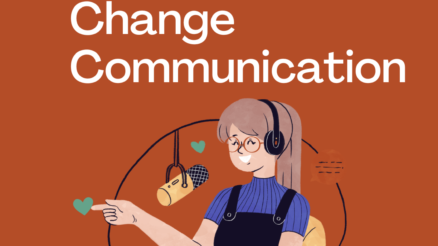In business everything is revolved around customers.
As business evolves it needs changes. Every business makes changes in order to server its customers in a better and efficient way.
Do customers welcome change ?
No, they don’t.
Whether it’s a price adjustment or change in service, customers do not like changes. Many a times they are skeptical about change.
In this blog, we’ll discuss why it is important to communicate change, benefits of communicating change and how to communicate change to your customers.
Benefits of communicating change to your customers
Here are some benefits of communication to your customers.
Trust of customers: Customers relationship with a product or services is based on trust and no one at business want to break this trust. A good and early on communication always retains trust level of customer intact.
Feedback of customers: Communicating changes to your consumers and explaining upcoming changes sets the stage for a positive response, increased adoption, and decreased user dissatisfaction.
If your customers see themselves as valued members of your community and believe their opinions are heard, communication about change may help to facilitate better important feedback.
Protection of customers’ rights: From the perspective of customers rights, it is also important to inform them early one of any changes to the product or service they are using. Under the right to information, its a right of a customer to be informed about facts and details about product or services to make informed choices.
Demand creation: Early communication also creates buzz about changes that will make them excited about changes. Customers would be anticipating positive outcome of change. That would result into demand creation of product and services that are undergoing change.
Haters management: Some customers are in fact haters. When they see changes are coming up they start spreading hate. If you share updates and news about new services or products with them there is possibility that they feel valued and this might stop them sharing negativity.
10 Ways to Communicate Change to your Customers
Let’s discuss some of the best techniques in detail on how to communicate change to your customers.
1. Communicate reason for change
The first and foremost is to explain why the change is necessary, what will change look like and it is good to explain when this change will take place.
Demonstrate empathy for whatever changes the consumer might need to make. It’s also important to tell your customer what is in it for them or how this change will bring some good for them.
2. Be transparent and honest
You are at a mistake if you think that customers don’t understand changes. Don’t underestimate their ability to understand technical changes.
Changing terms or taking things away without explanation is something you should avoid at all costs.
All you need is to be transparent and honest in communication to your customers.
Customers will gather around businesses that admit they made a mistake, demonstrate that they understand how they got there, and put out a strategy for how things will be better in the future.
3. Be concise and clear
Organizations need to be clear and concise when communicating change to their customers. Most people will understand change if it is thoroughly discussed in advance.
Staying ahead of the curve and being as concise and clear as possible is the best strategy.
4. Communicate with a customer-centric perspective
Before making a major service change, make sure you’ve researched your customers and looked at patterns in how they use your services to support your decision.
When new changes are eventually revealed, reassure customers by conveying the advantages of the change, let them know that their input was taken into account, and make them aware how they may continue to participate in the enhancement process.
5. Communicate change through multiple channels
People receive information through different ways. You must ascertain how and where the customer prefers to communicate, whether it is via social media, emails, in-person meetings, or events. Meet them when and where they prefer.
Choosing right communication channel for change management is very crucial. It depends on informational needs of your customer and their preference of using specific communication channels.
Today digital communication platforms are widely used by customers. All of your other efforts may be useless if you don’t have an active presence on the most widely utilized digital communication platforms.
Your communication channels must keep up with the times, especially if you want to remain relevant.
6. Get your customers involved in change journey
It’s essential to involve your customers in the change process and make them feel like they’re a part of your product’s community. Take note of their ideas and value them.
Creating a consumer advisory council is an excellent way to gather feedback.
“You spoke; we listened,” this messaging can be used when upcoming changes are based on client feedback. In this way, customers will be able to see how the change is beneficial to them.
7. Understand customers’ concerns
You must understand feedback and concerns of your customers. And more importantly, make changes based on their feedback. This will also give them the impression that you are taking their feedback into account when making changes.
Customers who are dissatisfied frequently turn to social media. Follow hash tags and social media posts and respond to them as they arrive. Leave a message, not just a canned response, but one that responds to the comment made.
Many people just want to be heard. They may relax if they feel heard as a result of the response. Meanwhile, provide a means for them and communicate to them so that they can be understood in a more constructive way.
8. Be visual in your message
It’s difficult for people to grasp what changes they should look for, if you only send a text email or a push notice. You need to be visual to notify product updates because we’re so used to reading and ignoring texts and emails.
You want to show people what to anticipate and what they can accomplish with your product in a visual way. When consumers are visually prompted, they are considerably more likely to interact with new features and check for updates.
Instead of just explaining changes and updates, show them with screenshots and other visual aids. To further explain to the users that how to utilize new updates, you may include photographs, videos, and GIFs in your notifications.
9. Assess your communication
When you are done with your change communication to your customers, your next logical step is to assess your communication process. You need to know that did you communicaton achieve the desired results?
You can undertake customer satisfaction survey or use other methods to assess how your message reach across your customers.
There are few questions that you should be asking through these surveys:
- Did my customers know about the change?
- What percentage still don’t know about change and why?
- What did hold them back from taking action?
- What communication channels serve the best in reaching out to my customers?
- How can we further improve communication process?
10. Don’t be over ambitious
While communicating change to your customers, its wise to commit or promise only what you can deliver. You may be excited about change but your customers may think otherwise.
Therefore, its always good to be realistic about change and how it will affect your customers.
If you are over ambitious and unable to deliver accordingly then you will lose your credibility and ultimately trust of your customers.
Final Words
Customers are at heart of every business. When change is happening, you need to make sure they know what’s coming, what it means for them as consumers, and how they can best use what’s new or different to better their product experiences by communicating early and regularly.
You can present the change as a victory for them if you focus on the one item that actually matters to them rather than 10 things that might not. You may also select how much of the change process has to be communicated based on their priorities.
Also, remember that communication with your users should be two-way. Make it simple for them to inform you what they enjoy and don’t like, as well as any future improvements they’d want to see.



